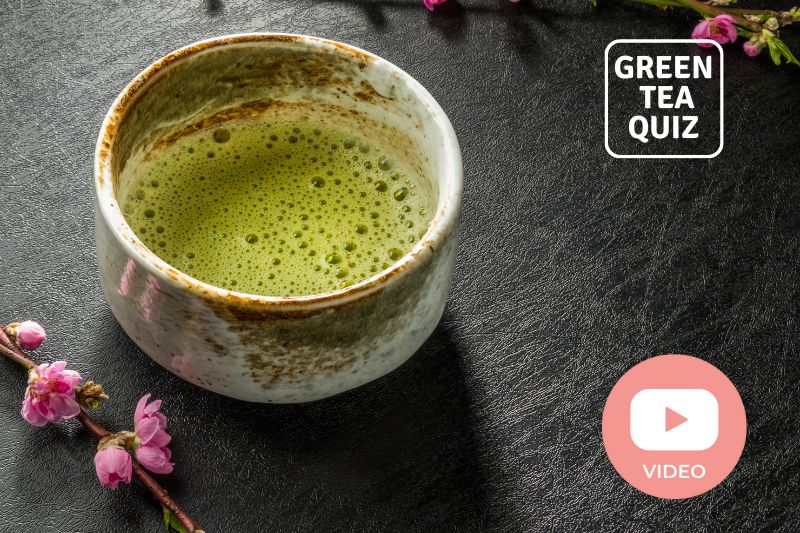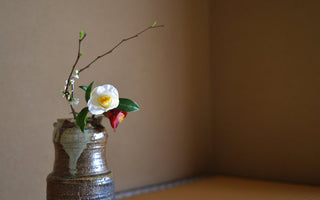When you invest in high-quality Japanese green tea, whether it's vibrant, finely-milled matcha or delicate, shade-grown gyokuro, you are purchasing a product of immense care and craftsmanship. From the farmer's meticulous cultivation to the complex processing, every step is designed to create a perfect sensory experience. However, all that hard work can be undone in a matter of days or weeks if the tea is not stored properly. One of the most common questions from tea lovers is about the best way to preserve that "fresh-from-the-farm" flavor. This brings us to a crucial, and often misunderstood, topic.
To freeze or not to freeze matcha and green tea? This is a question I often get from customers.
Answer: False!
Please, do not freeze matcha and Japanese green tea.
While the intention behind freezing—to preserve freshness—is a good one, it is unfortunately one of the most damaging things you can do to your delicate tea. The extreme cold and unique environment of a freezer introduce several risks that will permanently degrade the quality, taste, and aroma of your tea. Let's explore exactly what happens when you freeze it.
While it’s OK to refrigerate them, freezing will make them not taste as well. The reason is that tea leaves contain moisture which is a very important part in terms of the taste and nutrients.
By freezing tea, the moisture crystalizes and breaks the structure of the leaf cells, changing the taste. Additionally, low temperatures reduce the aroma of tea.
Freezing can also cause freezer burns, something we have all experienced before with our food. A freezer burn occurs when food is damaged by dehydration and oxidation; this happens more frequently when items are stored without good sealing. Thus, tea can also be damaged the same way by freezing.
A Deeper Look: What Happens When You Freeze Tea?
To truly understand why you should never freeze your tea, we need to look at four destructive processes that occur at freezing temperatures:
- Cellular Damage from Ice Crystals: The small amount of natural moisture within each tea leaf or particle of matcha is crucial for its flavor. When you freeze it, this moisture forms sharp ice crystals that puncture and shred the cell walls of the tea. When the tea thaws, these damaged cells release their contents improperly, leading to a harsh, unbalanced, and often bitter taste.
- The Condensation Catastrophe: This is perhaps the most significant risk. When you remove a frozen package of tea into a room-temperature environment, condensation will instantly form on the cold surface. Moisture is the number one enemy of green tea. Even a tiny amount can ruin the texture of matcha, causing it to clump irreversibly and develop a musty, moldy taste.
- Aroma Degradation: The wonderful, fresh, and grassy aroma of Japanese green tea comes from delicate, volatile organic compounds. Extreme cold permanently damages these compounds, significantly dulling the tea's fragrance. A large part of the tea experience is its aroma, and freezing effectively destroys it.
Odor Absorption: Tea leaves are highly porous and will act like a sponge for any ambient smells in your freezer. No matter how well you think it's sealed, there's a high risk that your delicate matcha will end up with the faint but permanent aroma of frozen fish, garlic, or leftovers, completely tainting its pure flavor.
So, what is the best way to store matcha and green tea?
The Golden Rules of Tea Storage
In short, you want to store them in cool, dark spaces away from oxygen. To do this effectively, you must protect your tea from its five mortal enemies:
- Light: UV light causes photochemical damage to tea, degrading chlorophyll and catechins. This will quickly make the flavor flat and lifeless and can fade the vibrant green color of high-quality matcha.
- Heat: Heat acts as a catalyst, speeding up the process of oxidation and causing the delicate flavors in your tea to break down and disappear. Never store your tea near a stove, on top of a refrigerator, or in direct sunlight.
- Oxygen: Tea's exposure to oxygen leads to oxidation, the same process that turns a cut apple brown. This makes the tea taste stale and diminishes its fresh, vibrant character.
- Moisture: As mentioned, humidity is devastating. It degrades the flavor, causes clumping in matcha, and can lead to the growth of mold and mildew.
- Odors: Always keep your tea stored far away from strong-smelling items like coffee, spices, or fragrant pantry goods.
Practical Storage Solutions: From Pantry to Fridge
Knowing the enemies is half the battle. Here is how to apply that knowledge to the question of how to store green tea and matcha in your home.
For Unopened Tea:
For a factory-sealed, airtight package of high-grade matcha or gyokuro that you do not plan on opening for several months, the refrigerator (NEVER the freezer) can be an acceptable place to prolong its shelf life. Allow the package to come to room temperature for a full 24 hours before opening it to prevent condensation.
For Opened Tea:
Once a package of tea is opened, it should ideally be consumed within 1-3 months for peak freshness. The absolute best place to store your opened tea is in a cool, dark, and dry pantry, away from the items listed above. Avoid putting an opened container back into the refrigerator, as the daily temperature changes from taking it in and out will introduce condensation and moisture, doing more harm than good.
Choosing the Right Container:
The original packaging is often not suitable for long-term storage after being opened. The best way to store loose leaf tea and matcha is to transfer it to a proper storage vessel. Look for a matcha storage container that is opaque (to block light) and has an airtight seal (to block oxygen, moisture, and odors). A traditional Japanese chazutsu (tea caddy), often made of stainless steel with an inner lid, is specifically designed for this purpose and is an excellent choice.
I have written an entire article about this with recommended storage devices.
Click below to read on about proper storage method for matcha and Japanese Green tea.
Get Free Bonus Books

Sign up for free to the Green Tea Club to get advice and exclusive articles about how to choose Japanese Tea, and tips, tricks, and recipes for enjoying Japanese tea.
About the author
Kei Nishida
Author, CEO Dream of Japan
Certification: PMP, BS in Computer Science
Education: Western Washington University
Kei Nishida is a passionate Japanese green tea connoisseur, writer, and the founder and CEO of Japanese Green Tea Co., a Dream of Japan Company.
Driven by a deep desire to share the rich flavors of his homeland, he established the only company that sources premium tea grown in nutrient-rich sugarcane soil—earning multiple Global Tea Champion awards.
Expanding his mission of introducing Japan’s finest to the world, Kei pioneered the launch of the first-ever Sumiyaki charcoal-roasted coffee through Japanese Coffee Co. He also brought the artistry of traditional Japanese craftsmanship to the global market by making katana-style handmade knives—crafted by a renowned katana maker—available outside Japan for the first time through Japanese Knife Co.
Kei’s journey continues as he uncovers and shares Japan’s hidden treasures with the world.
Learn more about Kei






